Know These Top 8 eCommerce App Development Trends In 2024
7 Dec 23 

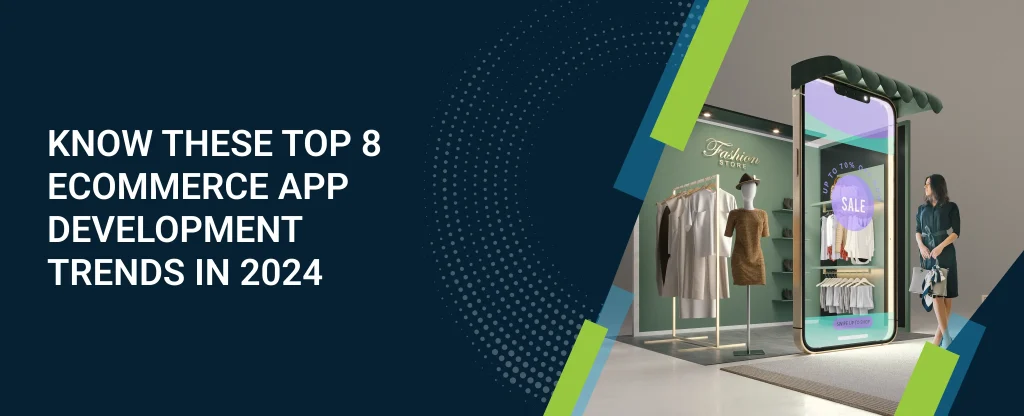
eCommerce app development must stay ahead of the curve and foresee emerging trends as the world of online purchasing continues to change. The e-commerce sector continually expands and evolves, and new cutting-edge tactics and consumer expectations are anticipated in 2024.
Since the beginning of the digital transformation, customers’ access to mobile phones and business opportunities have expanded simultaneously for entrepreneurs. Statista projects that by 2023, mobile e-commerce sales will have grown to $2.2 trillion, or 60% of all e-commerce profits globally. By 2027, that percentage is expected to rise to 62%.
What, then, is an indication? Not only is now the ideal time to develop an eCommerce app for your company, but it also explores the possibilities of boosting development and revenue in the future. In this article, let’s dive into the top 8 eCommerce app development trends to watch in 2024.
Statistics on E-commerce
eCommerce is a rapidly expanding sector; by 2026, worldwide revenue is predicted to amount to $8 billion, or 23.6% of all retail transactions. In addition, 63% of shopping trips start online. Online stores can now enter markets and generate revenue thanks to this. Additionally, it enables investors to use efficient marketing strategies and deliver a first-rate customer experience, which may lead to the conversion of new leads into repeated online buyers.
According to The Radicati Group’s latest Mobile Statistics Report (2020–2024), by the end of 2024, there will be more than 7.4 billion mobile users worldwide (including tablets and smartphones). Furthermore, Google acknowledged this global trend and declared in March 2020 that all websites would be officially shifted to mobile-first indexing.
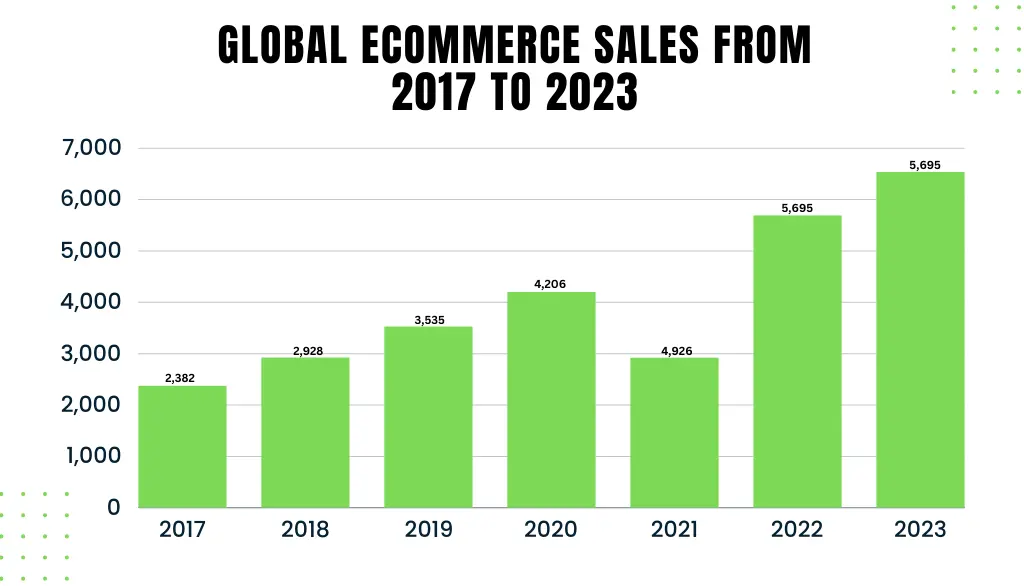
eCommerce App Development Trends for 2024
Users can place orders through websites, social media platforms, or online retailers because of eCommerce apps. Each time you make an online purchase, you support the eCommerce industry. The term is inclusive and adaptable; it covers mobile banking, applications, online educational platforms, tangible product sales through websites like Amazon or eBay, and online banking.
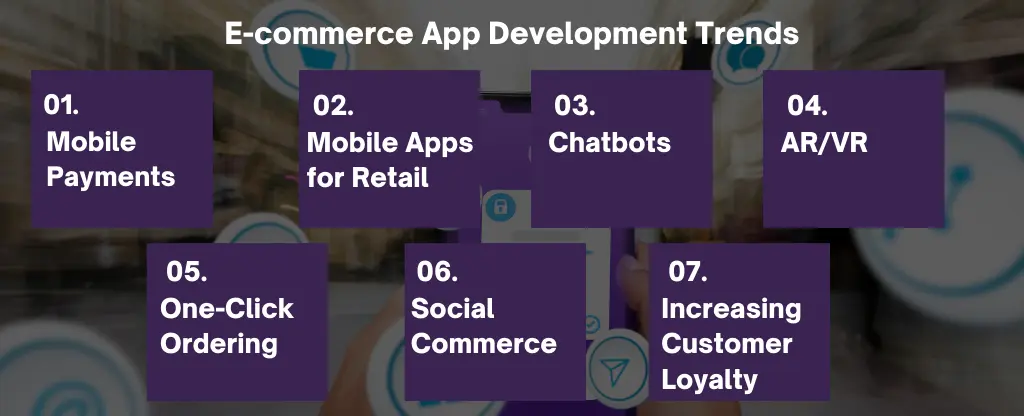
1. Mobile Payments
Most individuals keep cash in their wallets and make payments for their purchases with cash or credit cards. Still, in 2024, there will undoubtedly be a rise in the utilization of digital wallets. It is quick, easy to use, and safe.
It makes sense to offer mobile charges and other alternate payment methods, even if most of your clients still pay with credit cards. From $25 billion in 2016 to $275 billion in 2021, mobile wallet payments increased tenfold in just five years. The moment is ripe to enter the mobile payments market, as major players such as Apple Pay and Google Pay have introduced integrations for frictionless and contactless payments.
You can consult with a fintech app development company that provides all the services that help develop mobile fintech apps that integrate well with your e-commerce app.
2. Mobile Apps for Retail
These days, mobile apps are widely used. The COVID-19 pandemic accelerated mobile app development, with the Amazon app leading the way in Western markets. About 50% of all eCommerce revenue in the US comes from sales made through mobile commerce apps.
Consumer preference for shopping through mobile apps instead of Internet browsers is a current trend. It is best to create a retail mobile app before your competitors do and before the market becomes oversaturated with them. For this, you must partner with the best mobile app development company that provides you with the most effective and simple-to-use UI/UX design.
The initial phase to earning your customer’s loyalty is to give them a simple purchasing experience. Combining a mobile app with single-click ordering helps achieve this. Mobile apps only have a 20% abandoned cart rate, compared to a staggering 97% on mobile-specific websites.
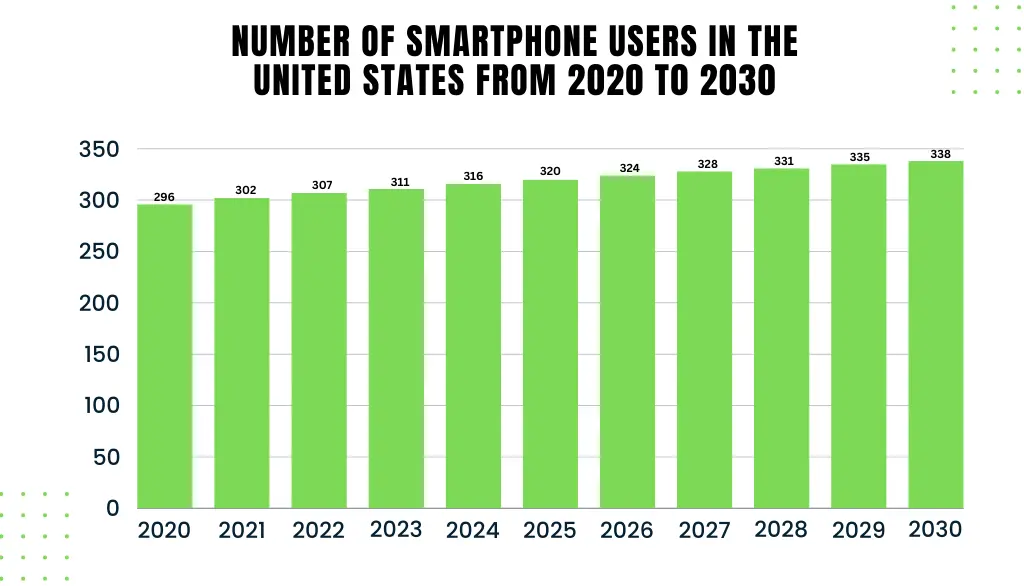
3. Chatbots
Millions of consumers use mobile devices for shopping daily, so it makes sense to support customers who request it. Software programs that mimic human dialogue are called chatbots. Typically, chatbots help users with mobile shopping. While physical interactions are no longer possible with online shopping, many customers still prefer to speak with someone about their purchases, have specific questions answered, or have other concerns that must be covered in the product description or website.
Then why employ chatbots? Just use actual people, please. One benefit of using chatbots is that they are always available, allowing clients to react immediately. If a chatbot quickly answers their question, they can receive a response right away. Furthermore, receiving hundreds of messages in a single day may make it impossible for an individual to respond to each inquiry.
Should you require additional persuasion, you must know that 57% of businesses’ clients may receive regular service from chatbots. As a result, those e-commerce sites saw an increase in return on investment.
4. AR/VR
The use of augmented and virtual reality in daily life is growing steadily. VR and AR aren’t just for video games anymore; they are now being used in retail. Amazon, Sephora, Ikea, and other well-known companies have integrated virtual and augmented reality into their mobile apps.
Enabling customers to perform virtual tests on products before purchasing is one of the most widely used VR and AR tools. This lowers the likelihood of returns and disappointed clients. Customers can use the Ikea app to point their mobile device’s camera at a particular spot in their house or business. After that, the app will determine the area by itself and suggest furniture for our homes.
5. One-Click Ordering
“One-click” ordering, invented and patented by Amazon in 1999, revolutionized the online retail market. The Amazon website made it easier for clients to browse for products with just one click. When clients create their first online purchase, they only need to enter their billing, shipping, and payment details once on the website.
After that, users can click a button, and the website will recall the information they already provided for future purchases. It facilitates smoother, more straightforward transactions suitable for consumer satisfaction and conversion rates. Since Amazon no longer needs to pay licensing fees, e-commerce sites can use their one-click ordering technology, as the patent expired in 2017.
Customers’ desire for effortless online shopping makes it among the developments that will guide the e-commerce sector in 2024. Users will find it more challenging to enter long lists of details on their smartphones than on a personal computer, so the effect of one-click ordering on e-commerce will be more significant.
6. Social Commerce
A different approach to eCommerce is called “social commerce,” which is the exchange of goods and offerings for money via social media networks.
Imagine you are browsing your Instagram feed and notice an innovative item that the retailer you comply with on the internet is releasing. Social commerce is present if you can purchase it straight from Instagram. There’s no demand to open a mobile app or select an external link to finish a purchase.
You must consider this trend because, on average, American people spent two hours and three minutes per day on social media this past year. You could profit from 123 minutes of their effort and attention. The US falls even short of the global average of 147 minutes a day.
7. Availability
Easy access has emerged as one of the major themes in mobile commerce this year. People with limited skills can engage in more activities than they could in the past because of technology. Online shopping is included in this. Due to availability concerns, 65% of consumers who identify as disabled have given up on buying something online or dropped their cart.
Retailers would be wise to consider the needs of people with disabilities when developing their mobile apps and websites, as they comprise a sizeable portion of the global consumer base. This implies that the eCommerce app developed must be helpful to each person, helping to improve customer satisfaction and experience. eCommerce must emphasize accessibility features such as text size, interface layout, and audio choices for those with visual impairments.
8. Increasing Customer Loyalty
Have you ever been anticipating the delivery of that monthly box of goods with great anticipation? Or have you just loved the ease of delivering your preferred goods without doing any work?
Get into the subscription service world!
Subscription services are about more than just goods; they foster connections. With customized experiences and the ease of regular delivery, these services convert infrequent customers into devoted followers. It’s like getting coffee with a friend once a month; only your favorite products are involved.
Companies can maintain happy subscribers by concentrating on consumers’ wants and adding advantages. You can think about discounts and loyalty programs.
Final Thoughts
Businesses need to pay careful attention to these compelling eCommerce trends in 2024 because of the rapid advancements in technology and the shifting preferences of consumers. Just ensure that the main objective of any e-commerce trend a company implements is to provide the customer with an endless shopping experience.
Ultimately, it forges a strong connection with the clients to win their loyalty. You may keep up with the ever-expanding trend of ecommerce app development by using these e-commerce trends and staying up-to-date. These developments are transforming the e-commerce industry and changing how businesses must function to succeed.
What, then, is the lesson? eCommerce is going to experience a wild ride in 2024!
Updating and staying ahead of the curve are crucial for companies. Regarding consumers? Things are going to get exciting in the world of online shopping. eCommerce’s future is way bigger!
Mindster will be the right choice if you want to develop an eCommerce app for your business. We are a leading mobile app development company with highly dedicated and passionate developers and a UI/UX design team crafting the most intuitive and advanced mobile app solutions.
- Android Development3
- Artificial Intelligence19
- Classified App1
- Digital Transformation7
- Doctor Appointment Booking App10
- Dropshipping1
- Ecommerce Apps31
- Education Apps2
- Fintech-Apps30
- Fitness App1
- Flutter2
- Flutter Apps19
- Food Delivery App5
- Grocery App Development1
- Grocery Apps3
- Health Care4
- IoT2
- Loyalty Programs8
- Microsoft1
- Mobile App Maintenance1
- Mobile Apps116
- Product Engineering2
- Progressive Web Apps1
- Saas Application2
- Shopify4
- Software Development1
- Taxi Booking Apps7
- Truck Booking App5
- UI UX Design8









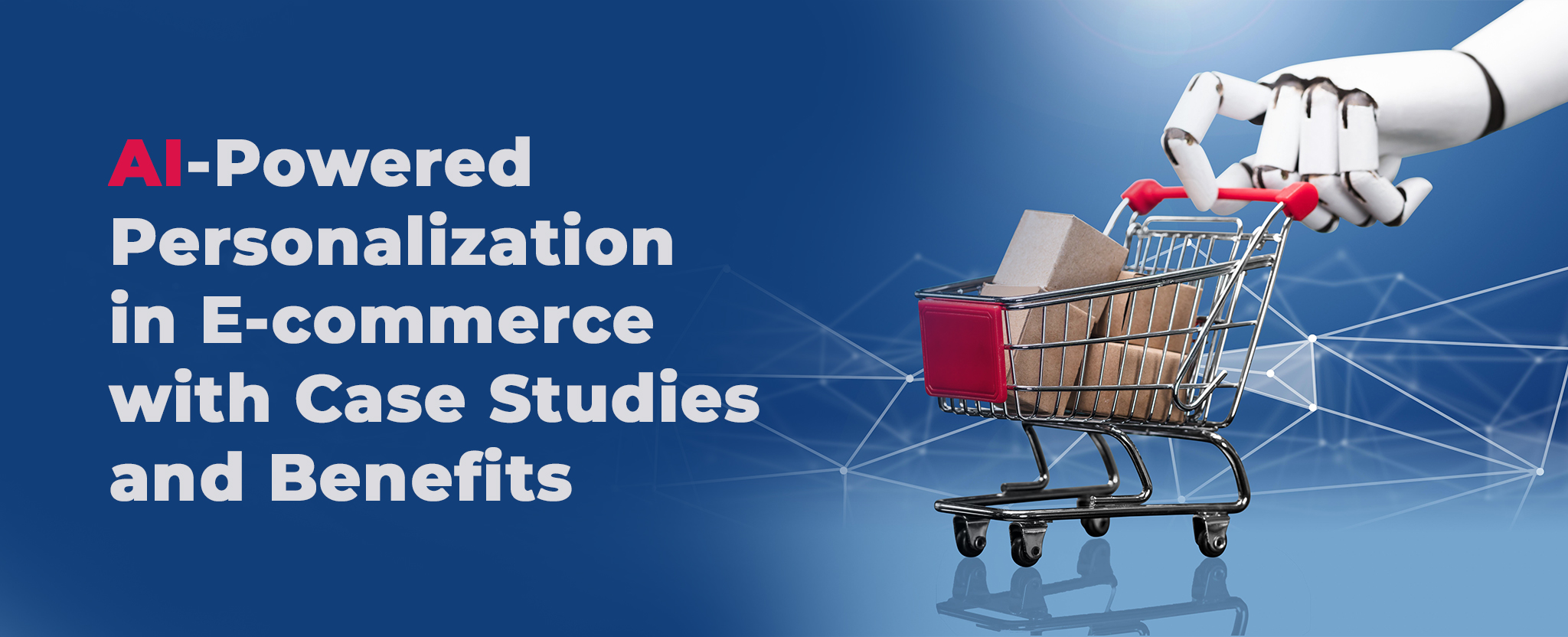

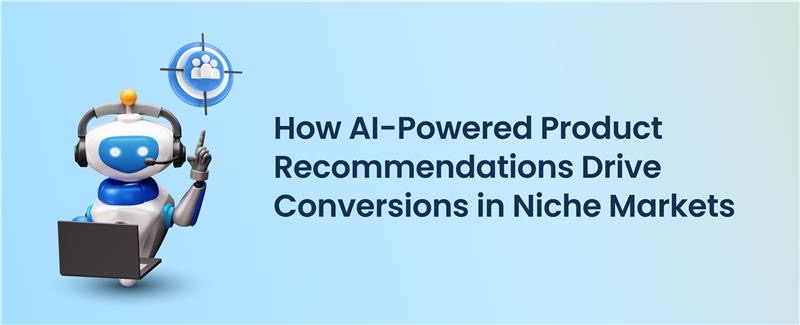
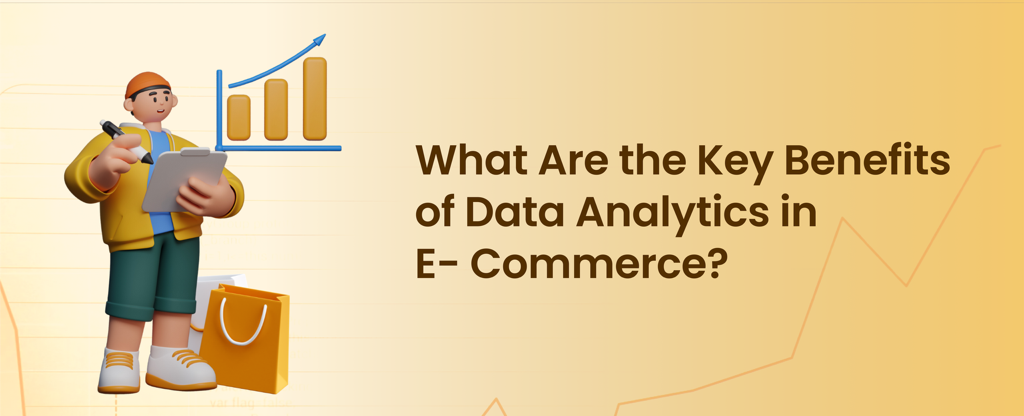






Comments